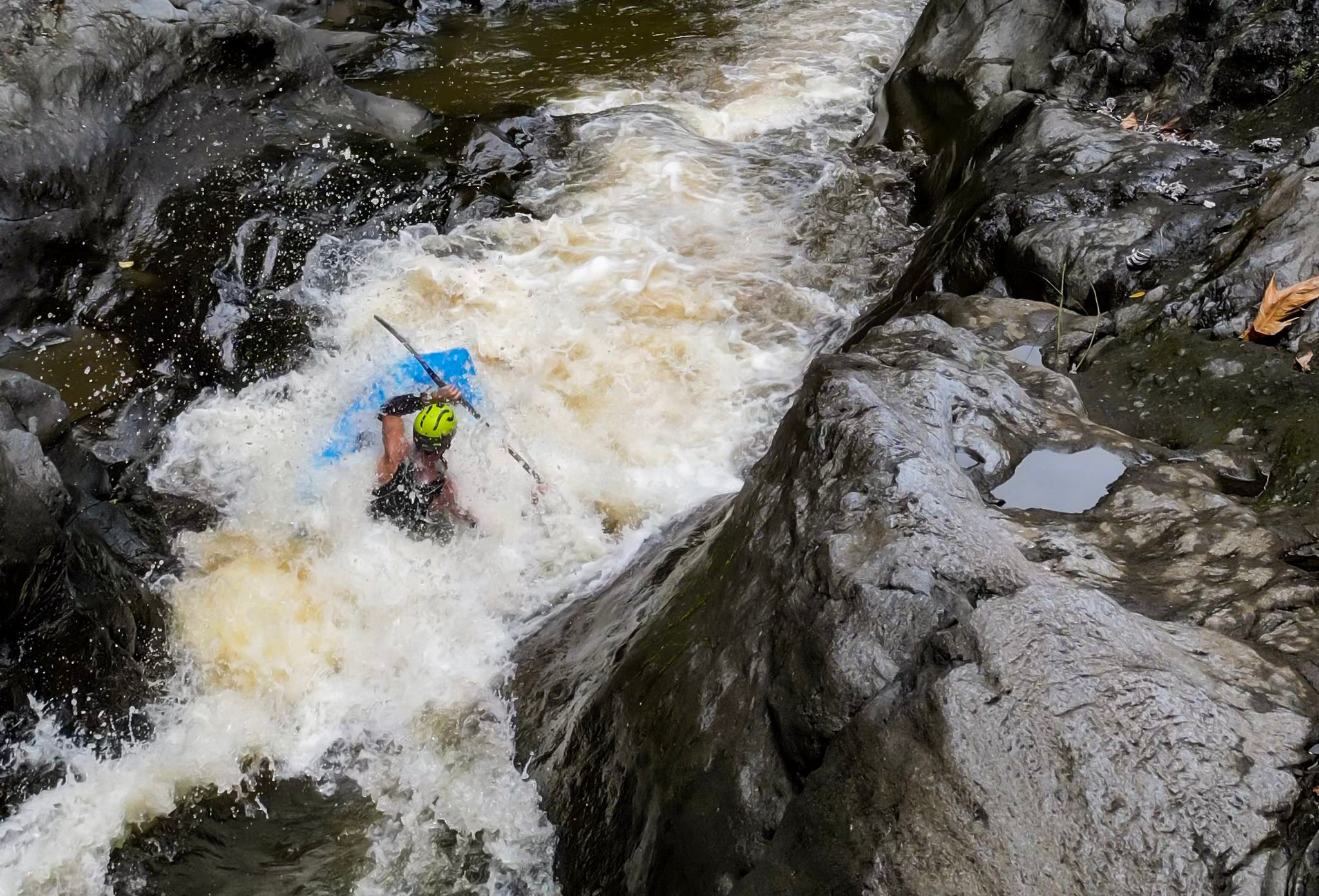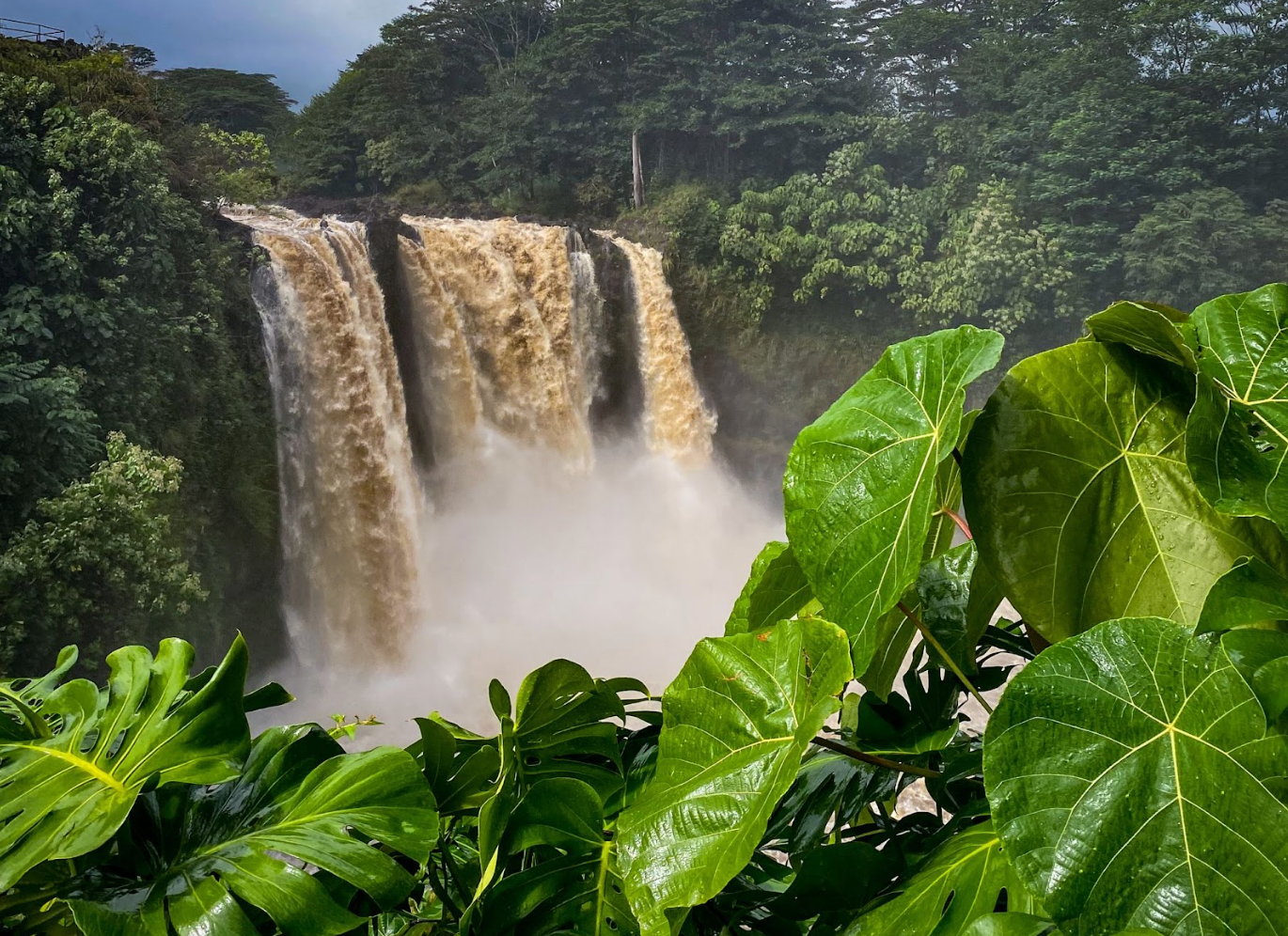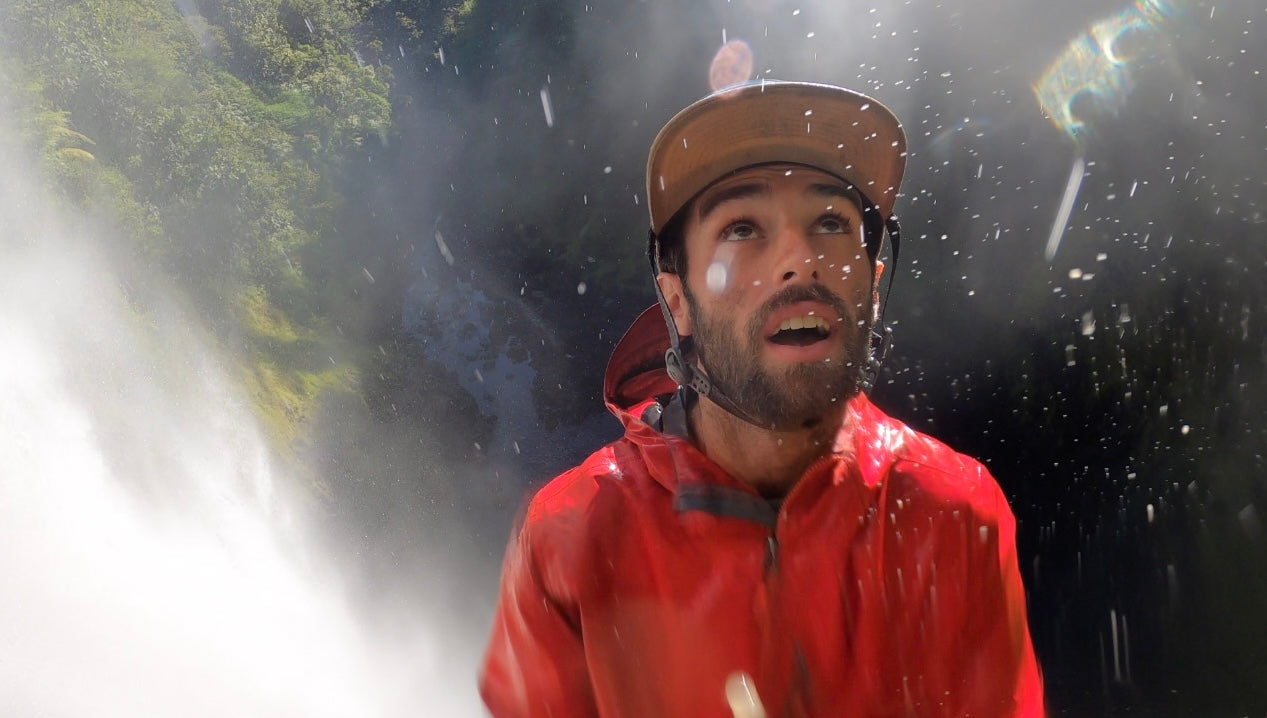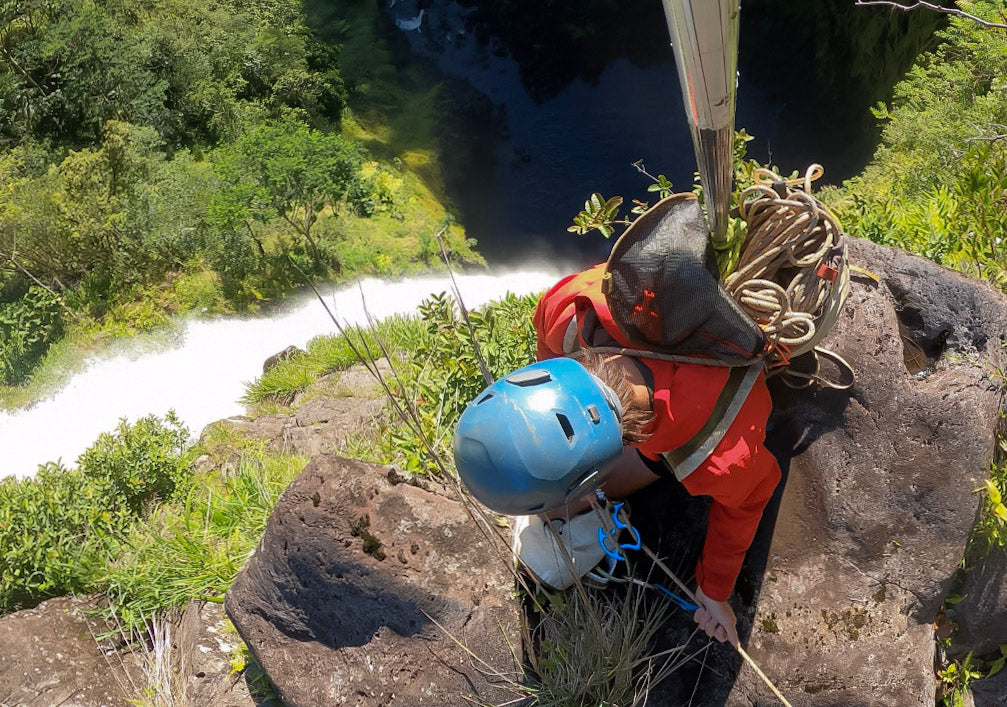Hawaii: A Dream Paddling Destination on the Brink
Hawaii: A Dream Paddling Destination on the Brink by Eric Bergdoll

For most people, mentions of Hawaii bring up visions of expansive sandy beaches, expensive accommodations, and big waves. For others it brings up connections to complicated politics, an illegal military occupation, and a residual frustration among some Native Hawaiians. Frustration that comes for good reason. Hawaii, before US occupation, was a highly functional, educated, and independent monarchy. In the 1800s, the literacy rate among Native Hawaiians was 98 percent. 1887 brought about the “Bayonet Constitution” orchestrated by the leaders of the “Big 5” corporations in the sugar cane industry. King Kalākaua was forced to sign a new constitution, stripping most of his power, under the threat of death. In 1893, Hawaii was invaded by United States military forces. In 1896, teaching and learning the Hawaiian language was banned in schools by the United States government.
At this point, you might be wondering, why is Eric teaching me history in a paddling article?
The reason is, it is important to preface anything happening in Hawaii with a baseline level of understanding. There is an underlying sensitivity to certain things, and without understanding it, visitors exist in ignorance. Captivated and mislead by corporatized, mass-marketed branding on everything for the beach, pool, or casual Friday at offices across America. Respecting the real Hawaiian culture involves understanding and education.
With this understanding comes a level of respect for the people holding onto their culture and putting effort into maintaining it. Respect is key in Hawaii, and from the local people to an outsider, it is not given, it is earned. Being respectful of the place includes acting with respect towards the people, sacred spaces, and to put the time in to understand the history that leads to certain sentiments. What this does NOT say is don’t go to Hawaii. It is an obligation to educate oneself.
In the day to day, 99.9% of interactions are some of the friendliest and warmest of anywhere in the world. For that .1%, I get it, I respect it, and it is completely fair to be mad. In my experience, the attitude you present is what you receive back. Coming in with an ego or something to prove is the worst possible way to arrive for 2 main reasons:
1. You get back what you put out there
2. Hawaii outdoor sports exist on the borderline of what is possible.

For the past 2.5 years, I’ve been entrusted with one of the whitewater community’s best kept secrets. In August 2021 I pulled up my computer, went on tripadvisor, and cold called everyone in warm places with a waterfall rappelling tour. As I was filling out an application for one location, the owner of The Inn at Kulaniapia Falls returned my call and told me he wanted me to relaunch his Waterfall Rappelling operation. After 4 hours on the phone, I had a job offer and a plan. That evening, I opened American Whitewater, knowing I wasn’t going to accept a job offer anywhere without kayaking, and that was the moment I first heard of the Wailuku River.
From the first video, I was captivated. Albeit, slightly intimidated/terrified at the same time. Every drop is a waterfall. The transitions from tranquil pool to stout are instantaneous and like nowhere else I’ve seen before. The basalt river corridor is gorged in enough to be pretty, but still often accessible, with almost every drop being a clean waterfall drop, most dramatically presented at the 90-foot Rainbow Falls. Many sections involve choose-your-adventure braiding and twisting channels, often only a few feet wide. With all of this action, somehow things are rarely problematic. Undercuts, sieves, or any real concerning hazards other than the occasional cave or wood are extremely rare. Its almost as if the river is the perfect age in geologic time for a basalt waterfall run. Which just so happens to be just under one million years (for those wondering).
 The mighty Wailuku, in all its beauty, must be respected. Wailuku translates directly to “waters of destruction” in Hawaiian. In one section, the boiling pots, the water flows entirely underwater through hidden lava tubes, bubbling up in tempting looking swimming holes. Swimming holes with a drain hole sucking out the side or bottom... Locals almost all have a story about a friend or uncle/ auntie (which extends far beyond parent’s siblings in Hawaii) who disappeared into the Wailuku. So much so, that the Wailuku alone accounts for 25% of river drowning deaths in the state. The people, in turn, try to find answers and deal with these events in a wide variety of ways. One of which, is the mythology passed down through generations of battles between Maui, a main demigod protagonist in Hawaiian culture, and the mo’o (a giant lizard monster). In an epic battle Maui pounded the Mo’o up and down the Wailuku, creating the boiling pots and finally getting it to leave his mom to her cave behind rainbow falls in peace.
The mighty Wailuku, in all its beauty, must be respected. Wailuku translates directly to “waters of destruction” in Hawaiian. In one section, the boiling pots, the water flows entirely underwater through hidden lava tubes, bubbling up in tempting looking swimming holes. Swimming holes with a drain hole sucking out the side or bottom... Locals almost all have a story about a friend or uncle/ auntie (which extends far beyond parent’s siblings in Hawaii) who disappeared into the Wailuku. So much so, that the Wailuku alone accounts for 25% of river drowning deaths in the state. The people, in turn, try to find answers and deal with these events in a wide variety of ways. One of which, is the mythology passed down through generations of battles between Maui, a main demigod protagonist in Hawaiian culture, and the mo’o (a giant lizard monster). In an epic battle Maui pounded the Mo’o up and down the Wailuku, creating the boiling pots and finally getting it to leave his mom to her cave behind rainbow falls in peace.
See, the unique thing about the Wailuku is it is actually the only waterway classified as a river on Big Island, everything else is considered a stream. It also can get rather high flow. The gauge measures one of 5 major tributaries. I’ve padded it as low as 12 cfs, it is perfect around 100 cfs, 200 cfs is getting too high. I’ve seen the gauge hit over 20,000 cfs. That’s one of five rivers. 20,000 cfs sounds like a great flow, until you put it in a river that is descending 250ft per mile. Imagine grand canyon flow going through the green river narrows and you get the picture, and things change fast. One morning I woke up at 7:30am and the river was at 39.9cfs. By 10:30 it was at 9,000, Scary big. Basically, this is a river that can kill you if it ever arbitrarily decides to. This is a major problem with tourists who see something online saying a spot is safe to swim but don’t check with reality before jumping in, or have any idea how unsafe rivers can be to the untrained eye especially without a pfd/life jacket.

This has lead to a tendency for the government to shut down access instead of taking the time to educate incoming tourists. Outdoor recreation is treated differently here. It's mostly focused on “Hawaii things” (ie surfing, diving, hunting, fishing). Sometimes reactions can get intense. There can be a lot of different factors playing into the responding attitudes to things local people are unfamiliar with. Personally, It has been disappointing to see so many gates closing permanently over the past few years.

“There Is a safe and respectful way to do whitewater (and canyoneering) in Hawaii, but it isn’t obvious to newcomers. It’s important to educate oneself about the significance of Kapu/no trespassing here. It’s important to keep in mind that there are many sacred places outsiders are not aware of and they need to be respectful. Don’t come to boost your social media and exploit the area, come to be part of it and give back. Whitewater in Hawaii has been very, very fragile for decades and just a few rotten apples can spoil the precious resource we have. Further Hawaii whitewater is not beginner friendly. These ares are full of rugged, dangerous forests and cliffed out areas, all making for higher risk exploration. Water/Wai in itself is considered sacred and individuals should deeply educate themselves before a strike mission to any island.”
-Steve H, one of the first whitewater kayakers to paddle the Wailuku
One example of something catching media attention was when a very famous kayaker ran a usually-dry side channel to Rainbow falls at very high flows. Being that he is one of, if not THE best kayaker in the world, he is one of the few qualified to do that. What was initially a positive news story was spun into a negative light over safety concerns. Since then, people are aware and watching. These events are said to have taken Hawaii paddling to 90% of the way to being explicitly made illegal. Meanwhile, every single local person I’ve spoken with has a similar outlook on the subject: That was pretty sketchy, but damn, that was cool. (sample bias may play a slight role here)
So, this brings me to the main problem puzzle. How do you take something that is 90% of the way to becoming illegal, and bring it back to the good graces of public and legal perception? It is a long and possibly impossible road. The landowners who provided access before, even those most excited about paddling, have lawyers saying “hell no” because of the liability. Government officals and workers dont understand why people do these activities. Everyone, including other paddlers, is worried about unskilled copy-cats accidentally killing themselves because they saw it in a youtube video.
I find the comparisons between waterfall kayaking and big wave surfing endless- when it’s too big and messy, you don’t go. At any given time certain places are safe to be, others are dangerous. Conditions can change fast so you need to stay alert, but experience, research and preparation keep things under control. Both, at their core, involve taking a risk for a moment of bliss and flow in a powerful aquatic environment. An environment that only a lucky few get to experience and understand.

River trips in Hawaii are approached much more like a technical canyon than a typical river, and require high level experience in both activities. They also require extensive trip planning and scouting. The Hamakua and Kohala coasts have canyons with sudden, fully-overhung waterfalls hundreds to thousands of feet tall. The completely inaccessible, “you’re in too deep” kind of reality check that you’re probably not getting out of. In a way, the access issues and need for “check yourself” moments is all a part of the allure of what this magical and forbidden gem has to offer. As they say, “you always want what you can’t have,” and maybe that is the way it will always be. Maybe the United States and it’s lawsuit culture just doesn't work for pushing the sports of kayaking, packrafting and canyoneering. Maybe access will never be perfect, but the world is a better place knowing that truly unlimited progression potential is out there, ready for those who wish to drop in.
Oh, and one other tidbit to mention… As soon as the Wailuku gets too high, hundreds of rivers up the coast start flowing. Every drainage is around 26 miles of 250+ft/mi, pool drop, from over 13,000ft to sea level. 98% have not been run. Many of these rivers are bordered by private land, but almost all of them have a potential access angle. It will take time, work, and nobody messing it up, but if the paddling community can find a way to make the added liability of open access worthwhile for private landowners, a lot of gates could open. One thing to keep in mind- at this stage, 90% illegal can go to 100% very quickly.


